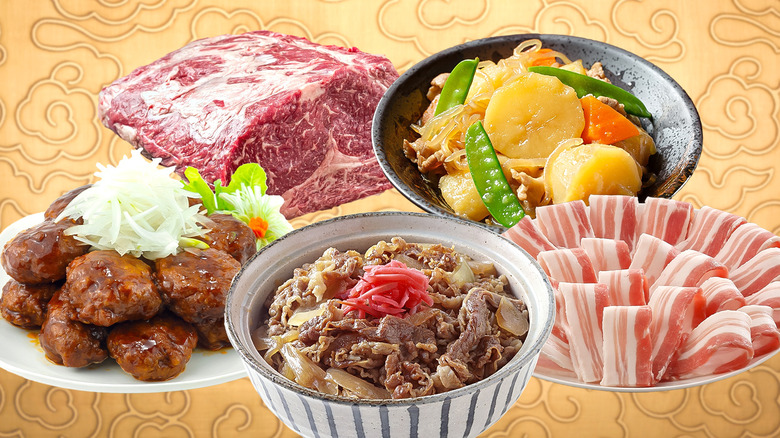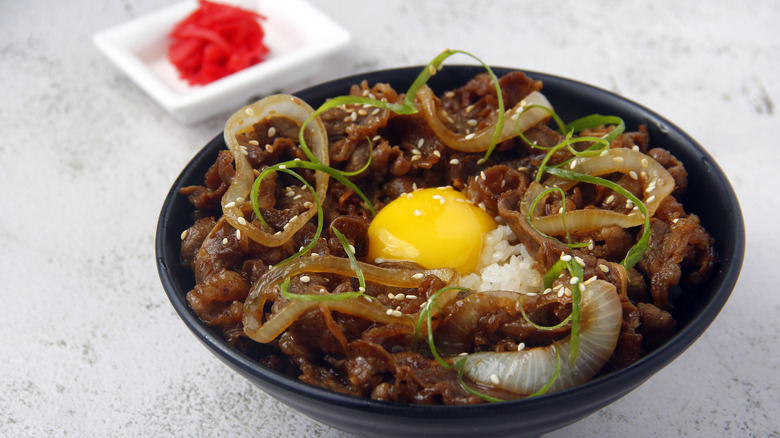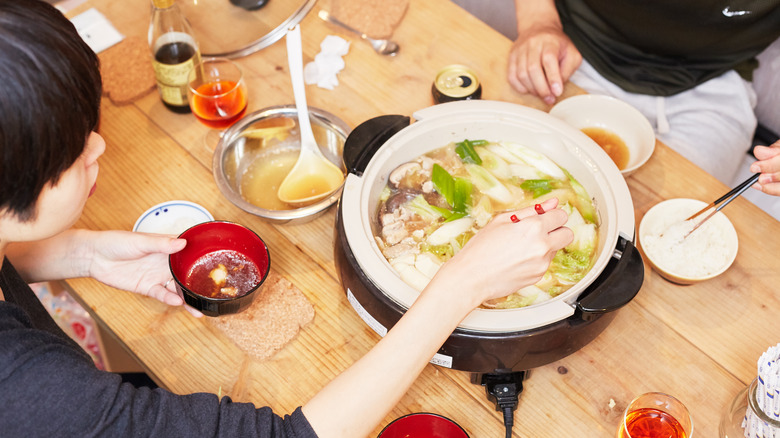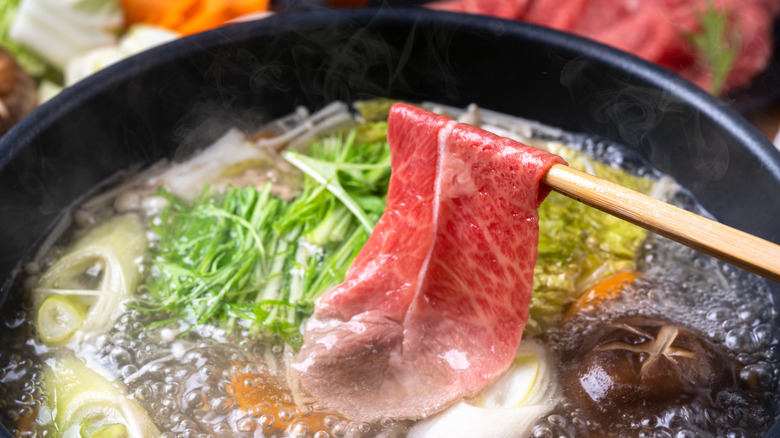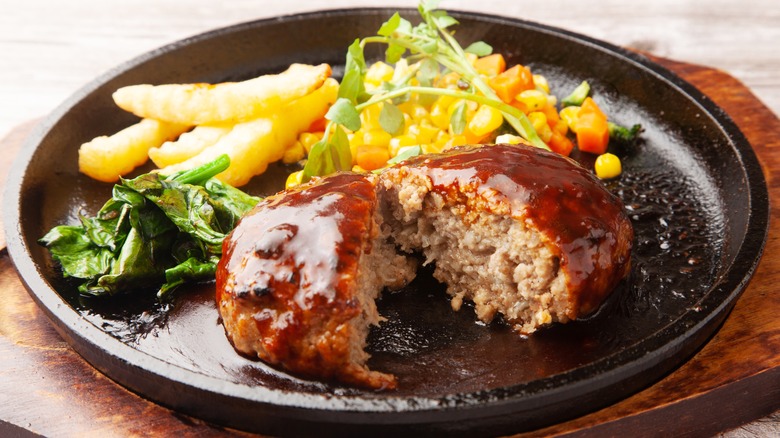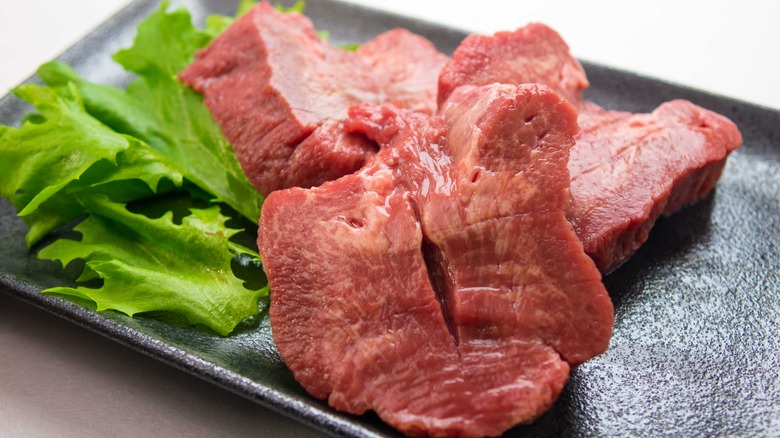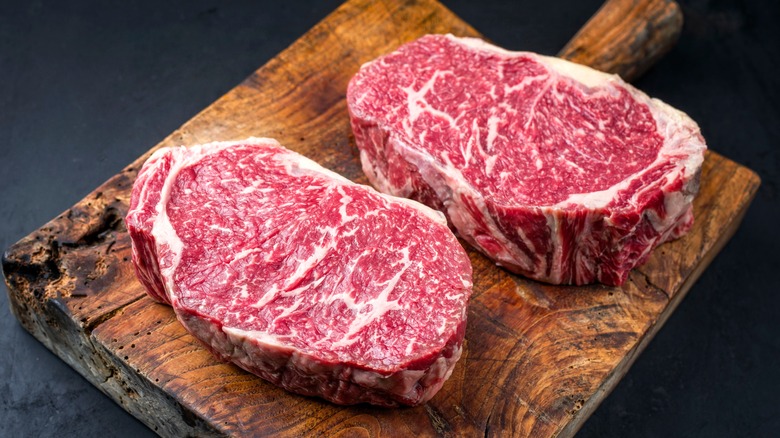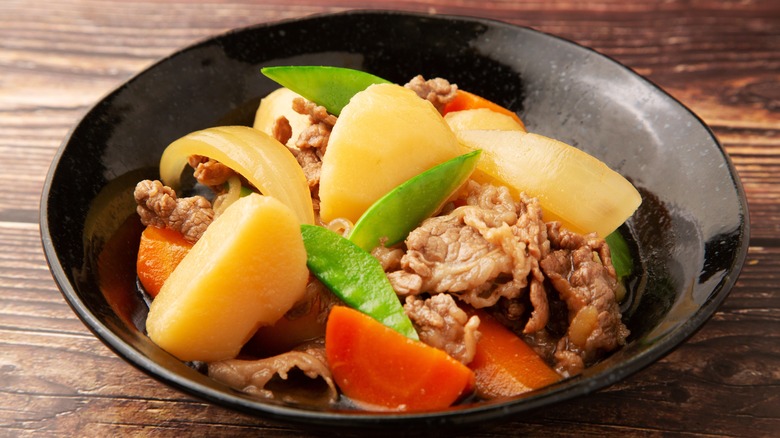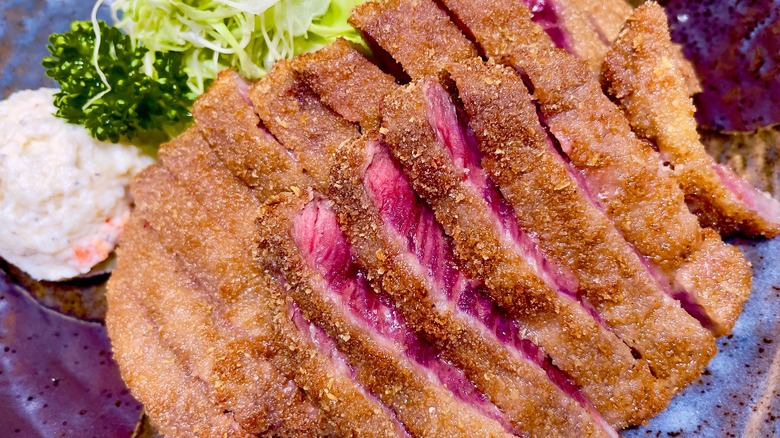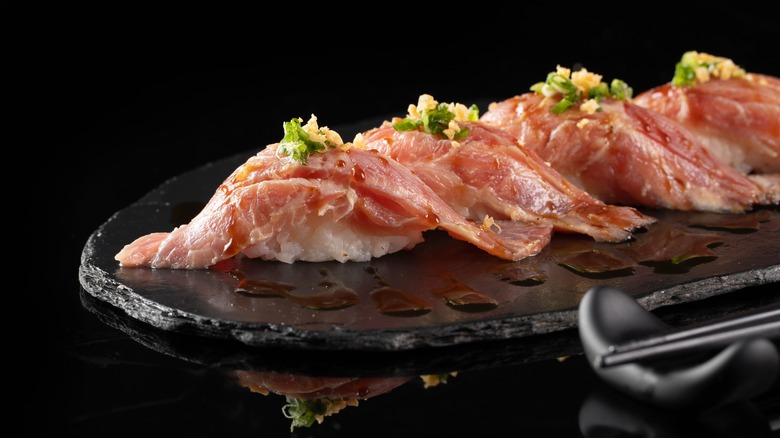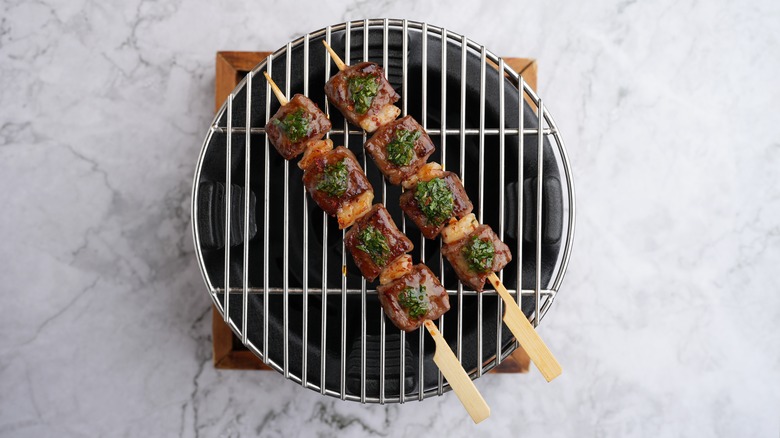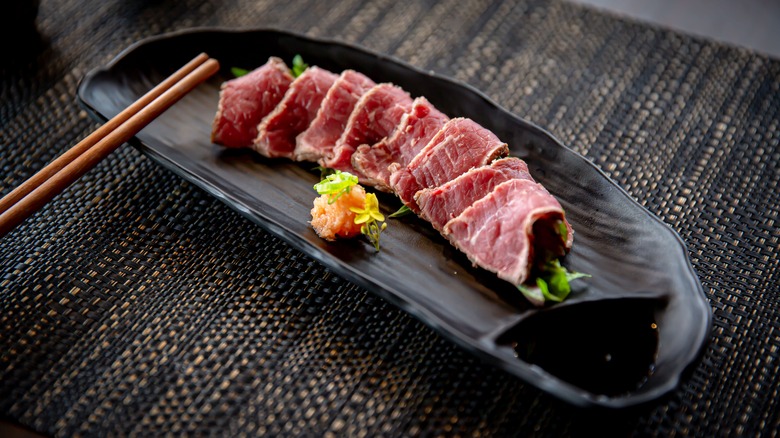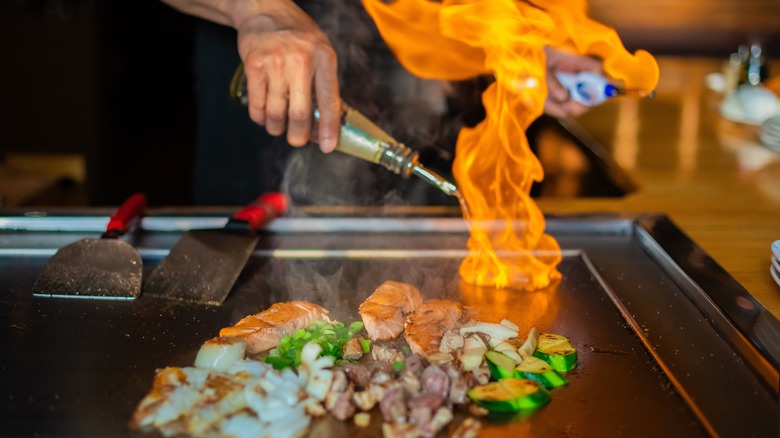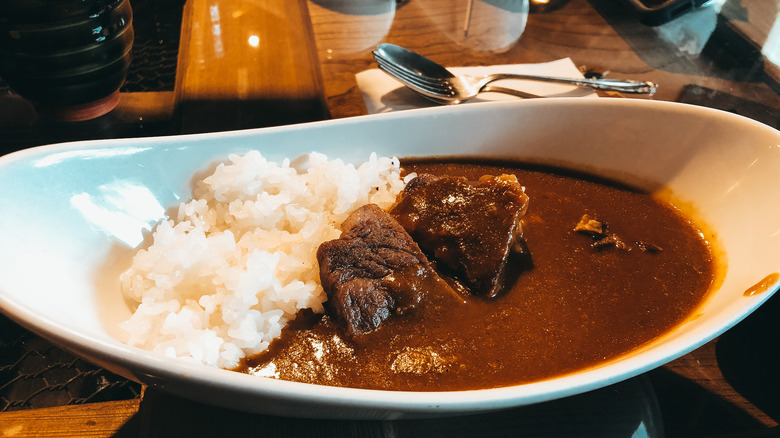13 Japanese Beef Dishes You Should Know
If you are a hardcore fan of Kobe steak, you might be surprised to learn that for over 1,200 years, beef was banned in Japan. Eating meat was taboo after the arrival of Buddhism in the country in the 6th century. Beef was especially frowned upon; some shrines required you to fast for 100 days to repent for eating it. This changed in the late 19th century, as Emperor Meiji took measures to open Japan to Western influence. Today, the Japanese eat as much meat as they do seafood.
This is something that surprised me when I moved to Japan for six months. I spent most days snowboarding, leaving me extremely hungry and ready to taste every dish I could find. I had expected to be inseparable from seafood dishes, especially sushi and sashimi. In reality, the beef dishes impressed me most of all — in their flavors, textures, and overwhelming variety.
Anyone who loves food should know the following amazing dishes, which include sushi made with raw beef, a Japanese take on a hamburger, and a mouthwatering hotpot dish known as sukiyaki. Be warned: If you read on, you might find yourself immediately drooling or hopping in your car to head to your nearest Japanese restaurant.
Gyudon: A scrumptious beef and onion rice bowl
While I was in Japan, gyudon was my go-to when I felt like an inexpensive, tasty lunch. The name translates to "beef bowl," which accurately — if plainly — depicts the dish: a bed of rice topped with thinly sliced beef and onions cooked in a sweet and savory sauce, usually containing dashi (a type of Japanese soup stock), soy sauce, sake, and sugar. The combination is light and filling at the same time. The thinly sliced meat melts in the mouth, while the rich umami flavors and warm rice make for a perfect comfort food.
Gyudon is served at casual, canteen-style restaurants. These are often designed for workers on the go, with plenty of counter seating for solo diners. Gyudon bowls are served quickly, and you can help yourself to sides of pickled ginger, sesame seeds, chopped spring onions, or a raw egg, which you stir into the rice bowl and let cook from the heat of the food.
Gyudon originates from a beef hot pot known as gyunabe, which became very popular during the Meiji era, at the very beginning of Japan's love affair with beef. Gyunabe was made of beef and onions, stewed in a miso paste broth. People began to pour their leftover broth over rice, and restaurants spotted this combination as a cheaper alternative to the original dish — and gyudon was born.
Beef sukiyaki: A sweet and savory hotpot
Winters in Japan can be harsh. This cold weather explains the popularity of hotpot dishes, which can heat you up from the inside out. One of the most common hotpots is beef sukiyaki, which is one of the most succulent, moreish dishes I've ever tasted. Filled with flavor, it combines fresh vegetables, tender beef, and a broth brimming with sweetness and umami. It's truly a treat.
Thinly sliced beef is sprinkled with sugar and seared on a grill. It's then placed in a sweet and savory broth containing dashi, sake, soy sauce, and sugar. Other ingredients, including mushrooms, onions, and greens, are added to the pot. Sukiyaki is designed to be eaten communally: It sits in a large pot, cooking on the table in front of you. Each person helps themselves to small bowlfuls. When the broth is the only thing left, you generally add shirataki or udon noodles for a final, comforting, and filling bowl of delicious sukiyaki flavors.
Sukiyaki is traditionally served in hotpot restaurants, and depending on the quality of the ingredients, prices vary from mid-range to very expensive. It is particularly popular in winter and in the colder parts of the country, including the mountainous Japanese Alps.
Shabu shabu: Beef cooked in broth
Shabu shabu is another wonderfully warming dish, perfect for those winter months or any time your heart, soul, and stomach need some comfort. People sometimes confuse shabu shabu with sukiyaki, as both contain broth, veggies, and thinly sliced beef. Actually, shabu shabu is prepared and consumed differently.
The name shabu shabu is an onomatopoeia that translates to swish-swish — the sound your chopsticks make as you stir meat and vegetables around in broth! Like sukiyaki, shabu shabu is served in a communal pot in the middle of the table, except that this time, rather than the beef being seared and added to the pot, the diners pick up raw slices of beef with their chopsticks and hold them in the pot to cook them — similar to a fondue.
The enjoyment of shabu shabu comes not only from the flavor but also from this cozy and familial way of sharing a meal. Having grown up in France, where shared meals like cheese fondue and raclette (different from fondue, actually) are synonymous with winter, I was very happy to discover shabu shabu. The hot broth is made of kombu dashi, a stock made with kelp. While this bubbles in the middle of the table, you take bite-sized veggies and slices of meat and dip them in. The beef is thinly sliced, marbled meat with a high-fat content that drips into the broth and loads it with even more flavor.
Hambagu: Japan's take on a burger patty
Japanese hamburger steak, commonly known as hambagu, is a Japanese twist on the classic burger patty. Like the fast-food staple of the U.S., the hambagu is made of ground beef, although it is usually served with rice and steamed vegetables rather than a bread bun. It is topped with a rich, gooey wine reduction sauce, which will amaze your taste buds as the meat melts in your mouth.
In many ways, hambagu resembles a Salisbury steak more than an American hamburger. Salisbury steak is a ground beef patty served with gravy, mashed potatoes, and gravy. All three come from the same root: the Hamburg steak, which was spread around the globe in the 1800s by German emigrants.
Japanese children love hambagu, and it is often served at family restaurants and school lunches, as well as being a staple home-cooked meal in many households. Burger fiends need not worry, though. You can still find American-style burgers in Japan. They are known as hambaga – not to be confused with hambagu.
Gyutan: Grilled cow tongue
I love beef tongue, which was commonly served as a school dinner where I grew up in France. It has a rich, beefy flavor with a hint of sweetness and a slight gaminess, and is an underrated cut of meat you should try. Combine that incredible taste with a smooth and tender texture that feels almost velvety in your mouth, and it's no wonder that cow tongue is such a staple in cuisines around the world.
I was thrilled to discover Japan's take on grilled cow tongue — gyutan. The meat is thinly sliced and cooked over a charcoal grill. It is paired with pickled vegetables, whose acidic kick is a perfect accompaniment to the richness of the beef.
Gyutan is a relatively new addition to Japanese cuisine. It was introduced in 1948 when the owner of a restaurant specializing in grilled meat skewers decided to devote their shop to beef tongue dishes. It gained popularity fast, and now there are two chains of restaurants solely dedicated to gyutan with branches throughout Japan — Kisuke and Rikyu. They are laid-back venues, serving cold pints of lager to wash down these unforgettable meat skewers.
Kobe beef steak
I have a certain cynicism about much-hyped foods, which could be described as healthy skepticism or as me being obtuse. Whichever is the more apt descriptor, in the case of Kobe beef, I was quite simply wrong.
"How good can it actually be?" I asked myself, upon seeing the high price tag I was presented as in a steak house in Tokyo. I thought I wouldn't be able to tell the difference between a Kobe steak and another good piece of meat. Yet, when I bit into a medium-rare steak, I ate my words along with it. Kobe steak has a unique, almost buttery flavor and an unimaginable tenderness.
It was served in a very no-frills way: seasoned with salt and accompanied with steamed vegetables and mashed potatoes. Honestly, Kobe beef speaks for itself, you don't need sauces or fancy accompaniments. It is the intense marbling of Kobe beef that sets it apart. Fine streaks of fat are distributed delicately throughout the meat. They melt into the steak and provide the intense tenderness and flavor that are so sought after.
Nikujaga: A hearty beef and vegetable stew
Picture a beef and potato stew with the savory-sweet flavors often associated with Japanese cuisine. The result is nikujagu, a beloved Japanese comfort food. The name "nikujaga" comes from "niku" meaning meat, and "jagaimo," meaning potato.
The meat used in nikujaga is typically thinly sliced beef, which beautifully absorbs the flavors of the broth. The potatoes and onions, cooked until tender, soak up the sweet and savory mixture of soy sauce, sugar, and mirin. Sometimes, shirataki noodles, made from konjac yam, are added.
My Japanese friends raved about nikujaga, especially the ones made by their own parents. They say it is a dish best eaten at home, and for many, it seemed to carry the nostalgic taste of family. If, like me, you don't come from a Japanese family of your own, you can enjoy nikujaga in many Ryokan or traditional Japanese inns. Interestingly, the origins of nikujaga can be traced back to the late 19th century. A Japanese Navy admiral asked his cooks to replicate a beef stew he had eaten while studying in England. They did so, incorporating local ingredients and flavors to suit Japanese tastes — and created the wonderful nikujaga.
Gyukatsu: Beef cutlet
In Western countries, chicken katsu is one of the most popular Japanese dishes. Its beef counterpart, gyukatsu, is less well known but equally delicious. Gyukatsu is a combination of two Japanese words: gyu, which means beef, and katsu, which is a shortened form of "katsuretsu" derived from the English word "cutlet." So, literally, gyukatsu means beef cutlet.
Gyukatsu is made from high-quality beef, often wagyu beef, which is lightly breaded with breadcrumbs and then quickly fried to achieve a perfectly crispy crust while keeping the inside tender and juicy. The advantage of making katsu with beef is that you can create a contrast between the crunchy exterior and a rare to medium-rare interior, meaning that each bite is a combination of crunch and juice.
Gyukatsu is commonly found across Japan, both in dedicated restaurants and in casual dining establishments with wide menus catering to the entire family. It is also a simple, quick, and fun dinner to make for yourself at home.
Wagyu sushi
Wagyu sushi is a twist on traditional, fish-based sushi. It pairs a slice of raw Wagyu beef with a ball of sushi rice. Usually, the beef is slightly seared and salted to bring out the umami richness of the meat. It is an absolutely delicious combination: The meat's richness pairs perfectly with the slight tang of the vinegar rice. The flavors of the beef are highlighted with a hint of charcoal due to the searing. Wagyu sushi is usually served with a dab of soy sauce or wasabi. The latter is my favorite, as the spiciness and sharpness of wasabi cuts through the butteriness of the beef.
As a side note, the beef used for Wagyu sushi, Wagyu beef, is often confused with Kobe beef, but they aren't the same. Kobe beef is a specific variety of Wagyu, which must meet strict certification standards. So all Kobe beef in Wagyu, but not all Wagyu is Kobe.
Wagyu sushi can be found in some high-end sushi restaurants but is more commonly served at food stands in markets or around popular tourist attractions. You can usually buy just one or two pieces, making it cheap and easy to give Wagyu sushi a try and see if you like it.
Beef kushiyaki: Grilled skewers
When it comes to beer snacks, Japan knows what it is doing. Izakayas are friendly, laid-back pubs where you can enjoy your pint — or pints — with an array of delicious food options. One of my favorites is beef kushiyaki, which literally translates to grilled skewers.
Cubes of beef are threaded onto a metal or bamboo skewer with mushrooms, bell peppers, or onions, then grilled over a charcoal flame, lending them a barbecue-like, smoky aroma. The center remains juicy and tender, while the outside develops a crispy char.
The most important stage of making kushiyaki is the marinade. Commonly, the meat soaks in a mixture of soy sauce, sake, mirin, sugar, ginger, and garlic, which lets the beef build up a wonderfully sweet, savory, umami flavor that enhances rather than overpowers the flavors of the meat. Other popular kushiyaki varieties include a miso-based glaze or a spicier chili marinade. Beef kushiyaki is accompanied by a side of dipping sauces, such as a tangy ponzu or a creamy sesame sauce, and with garnishes like chopped scallions or grated daikon radish, which provides a much-welcome freshness to every bite.
Beef tataki: A tasty appetizer
If you're craving a protein-rich appetizer, beef tataki might be for you. Unlike the other dishes on this list, beef tataki is served cold. It consists of beef sliced thinly, similar to sashimi. The slices are then seared and marinated in a citrusy mix made of soy sauce, mirin, ginger, and lemon zest. Tataki is usually served on a bed of salad leaves and with a tangy ponzu sauce.
The name tataki means "pounded" or "hit into pieces," and does not refer to how the meat is prepared but to the ginger that is crushed with a mortar and pestle and added to the marinade. The technique of quickly searing and marinating meat was originally used to preserve it, although today, it is mainly just to enjoy the flavors!=. The cooking technique had long been used for fish. In the 19th century, a rebel samurai noticed foreigners in the port city of Nagasaki grilling meat and decided to try the tataki method out on beef.
Beef teppanyaki: Food with a flourish
If you're looking for something more fun than a standard sit-down dinner, teppanyaki restaurants are as much about the performance as they are about the food. Chefs cook beef, seafood, and veggies on a table-side hot plate. They show their skills with swift, precise movements, moving their utensils around at record speed.
The teppanyaki dining experience is lively and social, making it a popular choice for celebrations and gatherings. When I went to such restaurants, I watched my fellow diners chat with the chefs and regretted my mediocre level of Japanese. Along with seafood and vegetables, beef is a key component of any teppanyaki meal. Searing the meat on the hot plate forms a caramelized crust while maintaining the tenderness of the inside. Accompanied by vegetables cooked in the meat juices and a choice of creamy dipping sauces, it makes for a very satisfying meal.
Teppanyaki uses good cuts of meat and fresh vegetables and prepares them in a simple yet delicious way. It showcases a certain Japanese philosophy of respect for the ingredients, of letting them speak for themselves. This way of approaching food is similar to what I learned when I worked as a kitchen hand in a French seafood restaurant, and it has stuck with me ever since.
Japanese beef curry
Beef curry is one of my favorite Japanese meals, both to eat and to cook. You probably associate curry with Indian or Thai food instead of Japanese food. In fact, Japan developed its own version of the spicy dish in the late 19th century, when British naval officers, who had discovered curry in India, introduced it to Japan. The Japanese dish consists of a rich, brown, sweet, and mildly spicy sauce served over a bed of steaming rice. This thick gravy marries particularly well with beef, chopped into chunks, and cooked until it falls apart.
The secret to Japanese curry's distinctive flavor lies in the curry roux, a concentrated blend of spices, flour, and fat that thickens the sauce and gives it its characteristic depth and richness. In Japanese supermarkets, you can buy this roux ready-made, making it easy to whip up a curry at home that tastes like comfort in a bowl. Plus, you can add your choice of vegetables and adapt the spice level to your own tastes.
